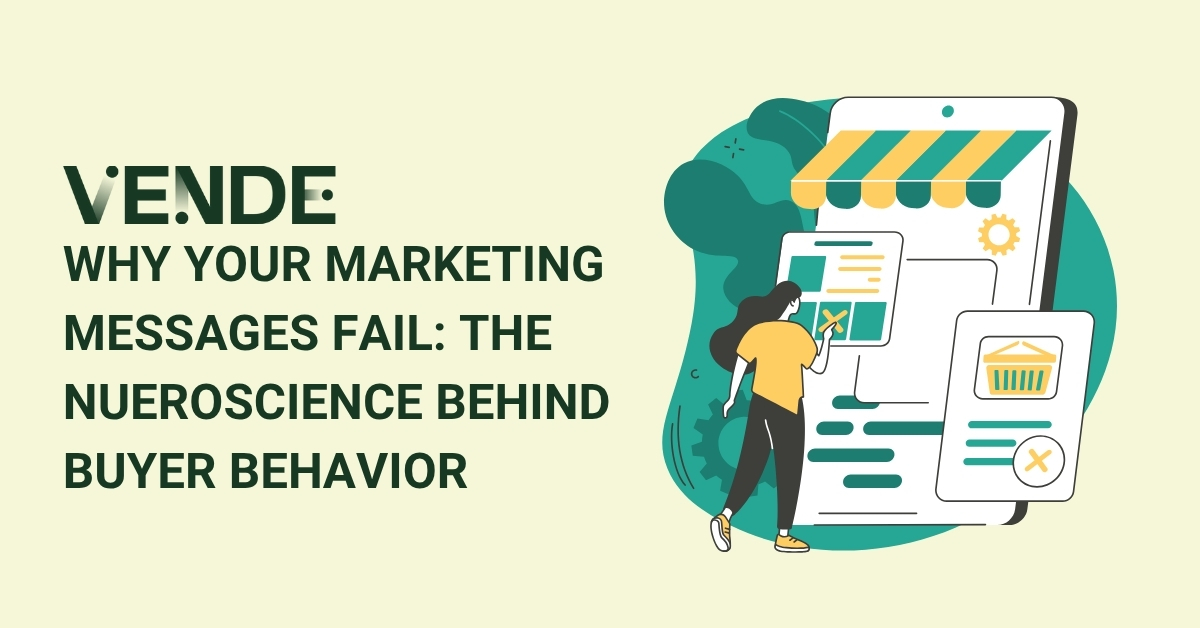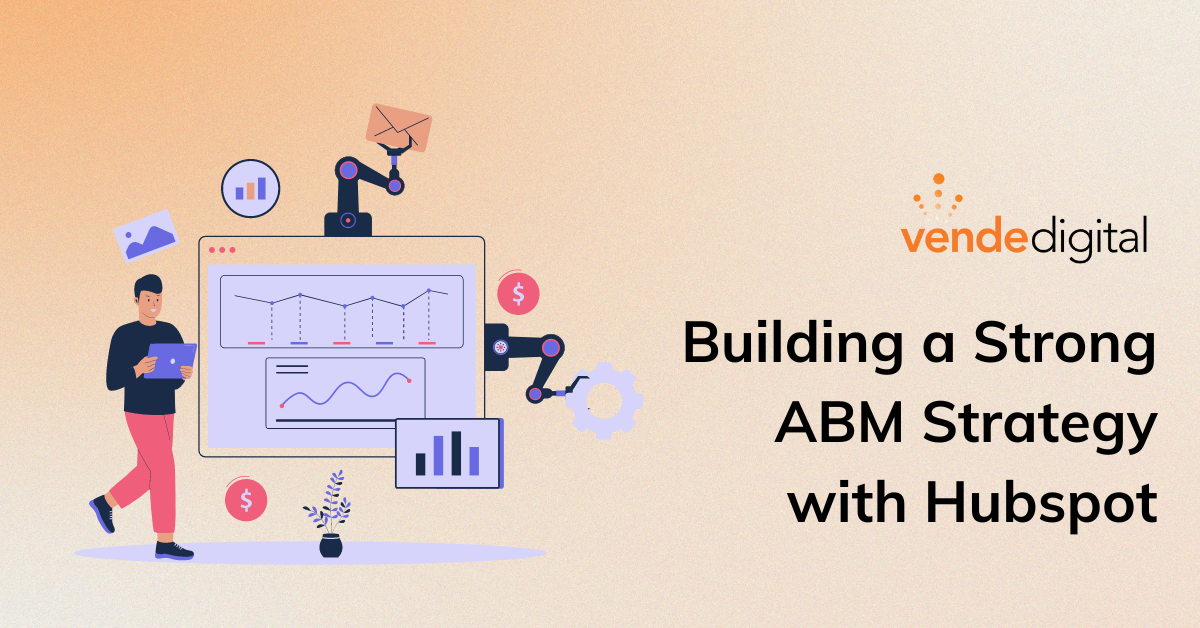
Building a Strong ABM Strategy with HubSpot
Every B2B marketer knows that Account-Based Marketing (ABM) can revolutionize how they engage with top-tier accounts. ABM can translate into shorter sales cycles and juicier deal sizes. You can forge stronger relationships and drive up conversion rates by crafting tailored experiences that deeply connect with the intended audience. But like a house built on sand, your ABM strategy can’t succeed without building a solid foundation.
This is where HubSpot comes into play. HubSpot offers integrated tools and features designed to streamline and enhance your Account-Based Marketing (ABM) efforts from the ground up. As a Certified HubSpot Solutions partner that focuses exclusively on B2B and Account-Based Marketing, we have seen firsthand how HubSpot can improve your company's Account-Based Marketing performance.
In this two-part series, we'll guide you through building and executing a successful HubSpot ABM strategy. Each blog will focus on account-based marketing examples, features, and tips that you can try on your own. This first blog will focus on laying a solid foundation. Our follow-up blog will dive into the execution and optimization of your ABM campaigns, ensuring you're equipped to make the most of your ABM strategy.
While this blog series will focus primarily on leveraging HubSpot, you may want to check out our on-demand webinar on ABM + Demand Gen for a more comprehensive review of Account-Based Marketing (ABM) principles.
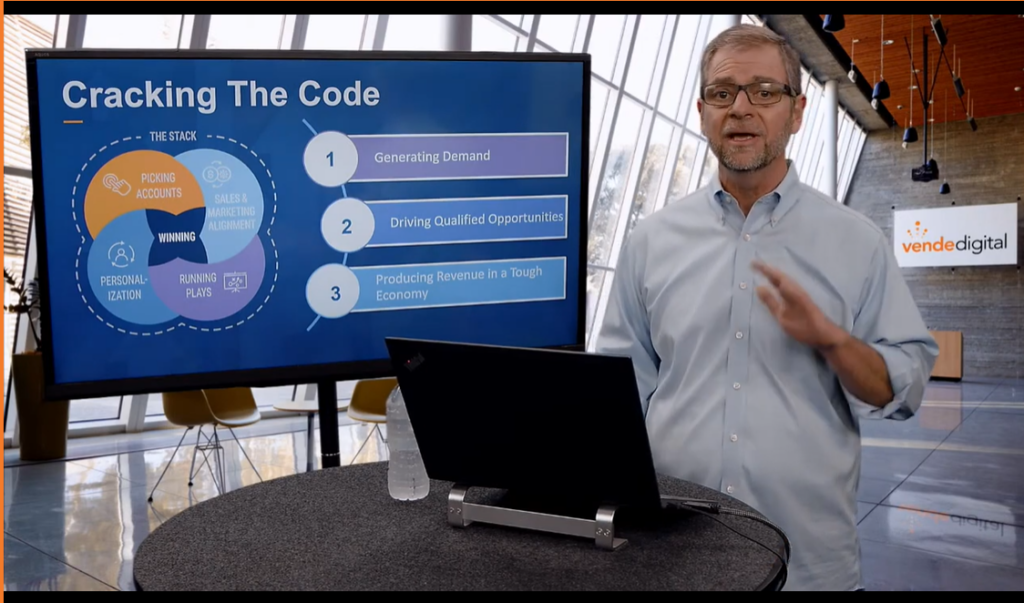
Ready to rethink your Account-Based Marketing (ABM) strategy? Let’s dive in.
Understanding the Modern Buyer: Why an Account-Based Marketing Strategy is Crucial
Before exploring the details of Account-Based Marketing (ABM), it's essential to understand why this approach is critical in today's B2B environment. ABM is part of an integrated demand generation strategy designed to engage modern buyers and adapt to their evolving needs.
The Shift in Buyer Behavior
Modern B2B buyers have dramatically changed how they make purchasing decisions. They increasingly use social channels like LinkedIn, YouTube, and Reddit to gather information and evaluate potential vendors. These buyers are on a self-guided tour and prefer to navigate much of the buying process independently, often leaving sellers out of the initial stages.
A recent study by Harvard Business Review highlights this change: Before officially beginning their buying process, B2B buyers already have a shortlist of four to five vendors in mind. In 90% of cases, they purchase from one of these pre-selected vendors. This underscores the importance of making it onto that shortlist through effective Account-Based Marketing strategies.

The Role of Digital Natives
Nearly 75% of B2B purchasing decisions involve digital natives—millennials or younger professionals who grew up with smartphones and are highly adept at using digital tools. In a third of these cases, they are the sole decision-makers.
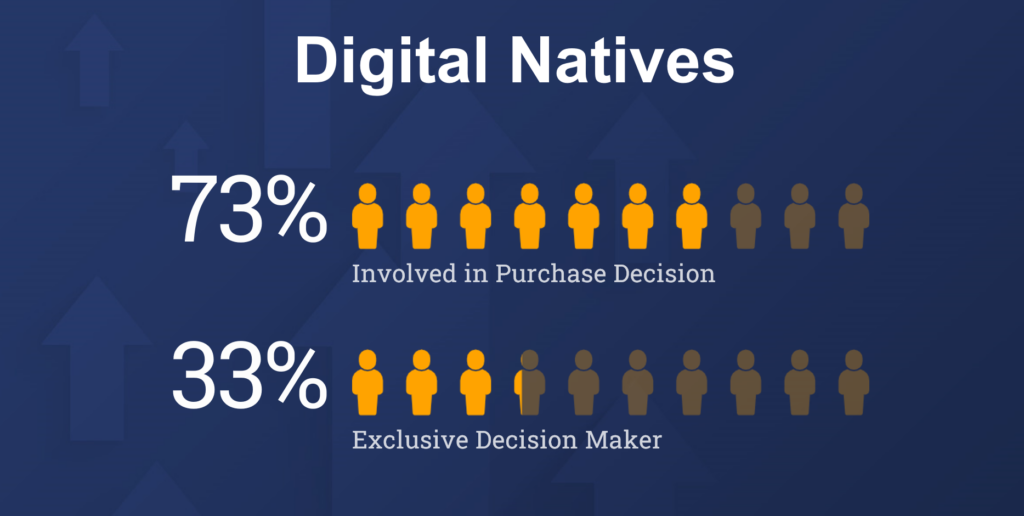
These buyers are consuming information through social media, podcasts, webinars, and online communities, making it crucial for marketers to meet them where they are. According to a study by Crowdtap, 84% of millennials trust user-generated content more than traditional advertising.
Adapting to Gain a Competitive Edge
B2B buyers have also developed a keen sense of filtering out irrelevant or spammy content. Highly personalized marketing is crucial to reach this audience, delivering targeted messages that resonate throughout the buyer's research phase. HubSpot offers tools to humanize your brand, understand buyer behavior, craft targeted messages, and optimize content for mobile engagement.
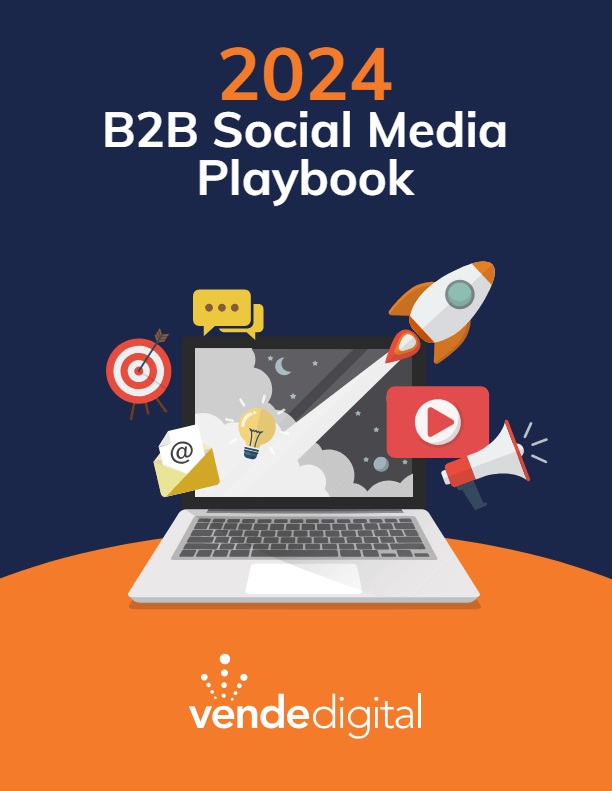
Check out our B2B Social Media Playbook for tips on activating key prospects on social media before, during, and after the sales process. This comprehensive playbook is your key to navigating the ever-changing B2B social media marketing landscape. It’s packed with actionable insights, proven strategies, and real-world examples.
Step 1: Identifying and Prioritizing Target Accounts with HubSpot
The foundation of any successful Account-Based Marketing strategy is a well-crafted list of high-value accounts based on your Ideal Customer Profile (ICP). HubSpot's suite of tools can help you identify, select, tier, and manage your high-value target accounts effectively. Here's how to leverage HubSpot's features to implement best practices in account identification:
Analyze Your CRM Data
Start by diving deep into your past six months of CRM data, focusing on both won and lost opportunities. HubSpot's reporting features allow you to visualize this data quickly, giving insights into your most successful accounts.
- Use HubSpot's Reporting Tools: You can create custom reports that show your win rates, deal sizes, and sales cycle lengths across different industries, company sizes, and other relevant factors.
- Leverage the Sales Analytics Tool: This feature can help identify trends in opportunity volume and win rates across different industries or account types as part of your sales process. You can create custom reports to slice your data by various parameters, ensuring you're targeting the most promising accounts.
Pro Tip: Look at more than just revenue. Pay attention to factors like ease of closing, customer satisfaction, and potential for upselling or cross-selling.
Identify and Prioritize High-Potential Accounts
Once you've analyzed your data, it's time to use HubSpot's features to identify and prioritize your high-potential accounts:
- Target Account View: Use this feature to systematically organize and tier your key accounts based on their potential value. This ensures you focus your efforts on the most promising opportunities.
- LinkedIn Sales Navigator Integration: Leverage the LinkedIn Sales Navigator and HubSpot integration to understand and prioritize key accounts that best fit your ICP based on the trends you've identified in your data analysis.
- Website Visits Feature: Use this feature to track companies visiting your site for real-time insights into interested accounts. Identify high-value accounts that still need to be added to your radar. Use HubSpot to filter website traffic with your ICP criteria, spot new leads, and effortlessly add them to your Target Account List.
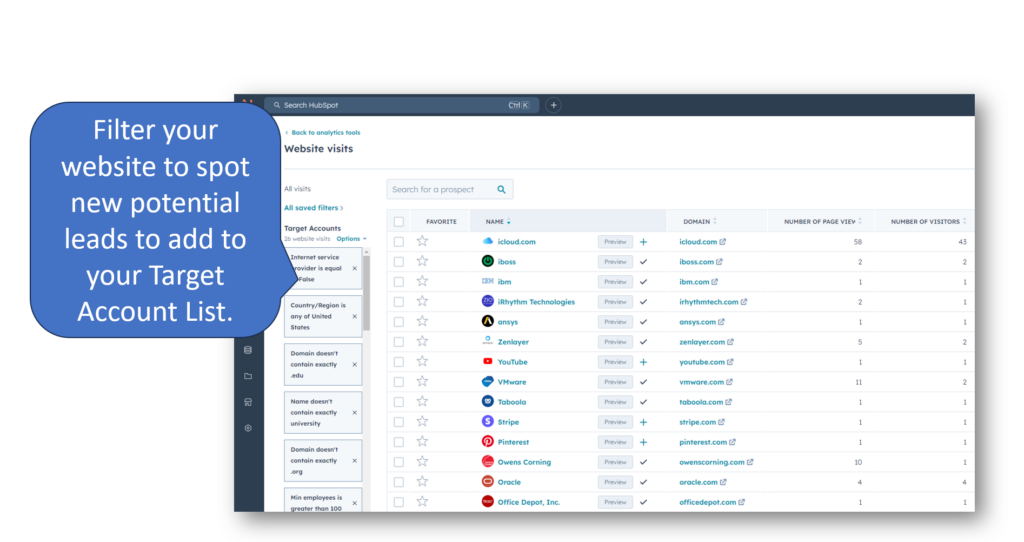
Refine Your Account-Based Marketing Targets
Quality trumps quantity regarding your Account-Based Marketing (ABM) strategy. Once you have your initial list of high-value target accounts, refine and update it regularly. This will ensure that your ABM efforts are always targeted and effective. Here's how to refine your list using HubSpot:
- Utilize Dynamic Account Prioritization—In HubSpot, you can create a custom scoring model that considers factors such as firmographic fit, engagement level, sales team input, and current opportunities. As part of your marketing and sales process, regularly update and adjust these scores to ensure your target accounts remain relevant and responsive to real-time changes. This allows you to focus your efforts on the most promising opportunities at any given time.
- Set up Automated Workflows to Update Scores—Setting up an automated workflow within HubSpot to update these scores weekly or monthly can save you time and effort over manually tracking changes.
- Use HubSpot's Recommendations Feature: This tool analyzes data insights to suggest potential accounts that closely match your ICP, helping you discover high-potential prospects you might otherwise overlook.
Pro Tip: To maintain a fresh target account list, review and adjust it every 90 days in collaboration with Sales to identify target accounts. Remove incompatible accounts, add new potential opportunities, and utilize HubSpot's tools, data, and logic for list building.
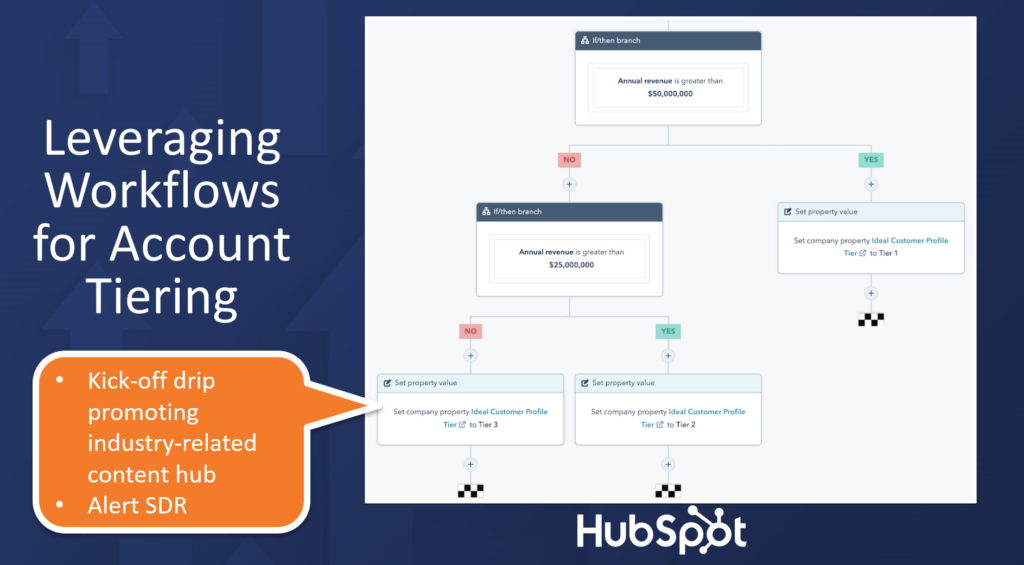
Step 2: Understanding and Leveraging Buying Roles in Account-Based Marketing
In Account-Based Marketing (ABM), the goal is to surround and engage a buying committee, not an individual contact. This committee consists of decision-makers, knowledge workers, managers, gatekeepers, and users, each with their own roles and priorities.
Decision-makers prioritize business objectives, while users focus on specific features or benefits. Let's delve into each role and see how HubSpot can help manage and meet each member's needs.
The Complexity of B2B Buying Committees
On average, 6.8 stakeholders are involved in a B2B purchase. On the buyer’s side, this creates challenges like information overload, differing priorities, gaining consensus, prioritizing crucial aspects, and managing this decision amongst already full plates. This added complexity underscores the need for a nuanced approach to Account-Based Marketing beyond traditional persona targeting.
What Are Buying Roles?
Buying roles are an extension of the persona concept, factoring in more nuanced information about the organizational structure and how involved certain people are in the buying process. Key questions to consider include:
- Who will be advocating for your solution?
- Who might be holding back the purchase decision?
- Who has the authority to sign the contract?
- Who needs to review and approve the purchase?
- Who will be using our solution once implemented?
- Who will be involved with implementing our solution?
- Who will manage the people who have to live with our solution?
Identifying and Targeting Buying Roles with HubSpot
- Define Buying Roles: Use HubSpot's custom properties to create fields for different buying roles. These might include titles like "Decision Maker," "Influencer," "End User," or "Financial Approver."
- Assign Roles in Your CRM: As you gather contacts from target accounts, use HubSpot's contact management features to assign buying roles to each contact.
- Monitor Buying Committee Coverage: Create a custom report in HubSpot to track the percentage of the buying committee you've captured for each targeted account.
- Tailor Content and Outreach: Leverage HubSpot's smart content features to deliver role-specific messaging and content. Remember, members of the buying committee will engage with content differently.
- Track Engagement by Role: Use HubSpot's reporting tools to monitor how different buying roles engage with your content and outreach efforts.
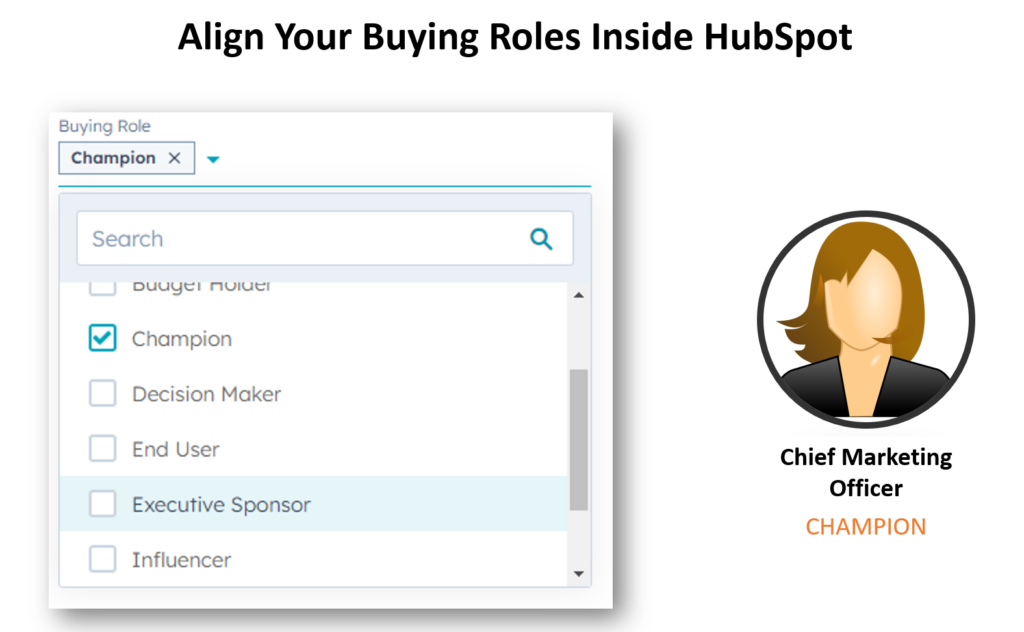
Pro Tip: Many contacts from a targeted account are only valuable if they are part of the buying committee members. Use HubSpot's reporting features to track the number of contacts and the number of buying committee members reached in each account.
By aligning your sales and marketing teams around these buying roles, you create a shared language and focus, significantly increasing the effectiveness of your Account-Based Marketing strategy.
Step 3: Creating and Managing Coverage Plans with HubSpot
Once you've identified and prioritized your accounts, the next step is building a coverage plan for each tier. This ensures that your engagement efforts are tailored, efficient, and impactful. HubSpot provides tools to help you create and manage these plans seamlessly.
Segmenting Key Accounts by Tier
Use HubSpot's Target Account view to categorize your accounts into tiers based on potential value, engagement level, and strategic fit. This segmentation allows for a customized approach to each tier, ensuring that top-tier accounts receive the most attention.
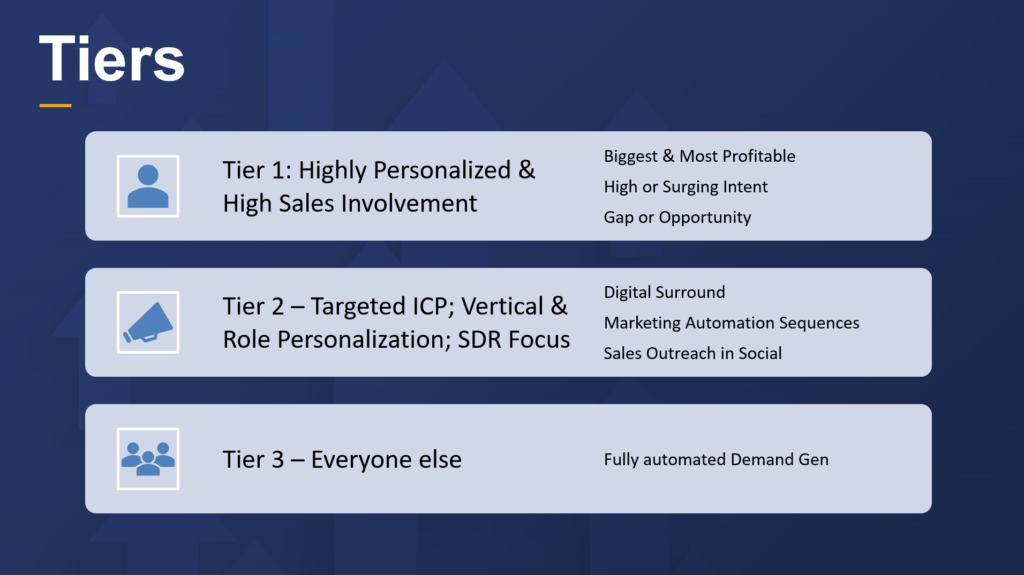
Pro Tip: Agree with Sales on managing the different tiers. For example, Tier 1 includes high-value accounts where Sales teams lead and build account plans while Marketing teams provide support. Tiers 2 & 3 are more marketing-led, focusing on content marketing and advertising to provide essential information.
Aligning Sales and Marketing Teams Around Key Accounts
Account-based marketing strategies fail because the Sales and Marketing teams are not aligned. To ensure alignment, utilize HubSpot's collaborative tools for both teams.
- Share Insights: Use HubSpot's CRM to share account insights between marketing and sales teams.
- Track Interactions: Monitor all touchpoints with accounts across marketing and sales activities.
- Plan Joint Outreach: Collaborate on the account-based marketing strategies for outreach and engage prospects to present a unified front to your targeted accounts.
Automate Engagement Tasks
HubSpot's workflows can automate repetitive tasks, freeing up your team to focus on high-impact activities:
- Follow-up Emails: Set up automated follow-up sequences based on prospect interactions.
- Meeting Scheduling: Use HubSpot's meeting scheduling tool to streamline the process of booking calls or demos.
- Lead Scoring: Implement automated lead scoring to prioritize your most engaged prospects.
An Example of How to Run Effective Plays
The following example begins with Marketing warming up cold targets through a multi-channel approach, including social, email, and direct mail. Marketing sets the stage for SDRs to reach out when the accounts are primed for engagement.
Once the initial outreach is made, marketing keeps these accounts warm with ongoing digital surrounds. This ensures prospects remain engaged and nurtured through personalized content even after the initial contact, maintaining their interest and moving them closer to conversion. This coordinated effort between marketing and sales maximizes the effectiveness of your ABM strategy, turning cold leads into warm opportunities ready for the sales team to convert.
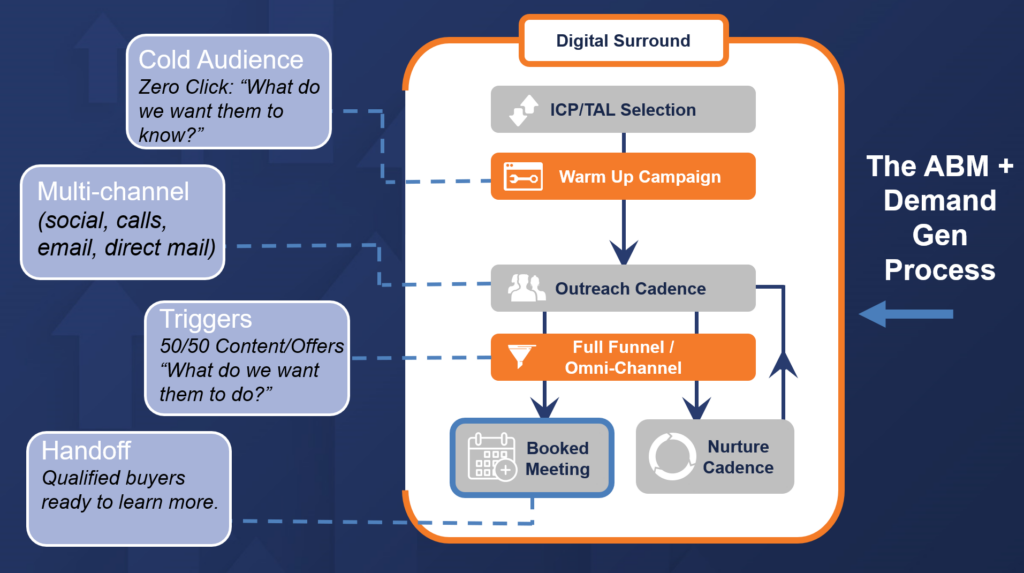
Pro Tip: Review and optimize your automated workflows regularly based on performance data to ensure they drive the desired results.
Step 4: Building Content Hubs for Target Accounts
Content is the fuel that powers marketing. Personalization is key to engaging and nurturing your target accounts. One way your account-based marketing strategy can achieve this is through content hubs. Let's explore why content hubs are crucial for Account-Based Marketing’s success and how to leverage them effectively.
What are Content Hubs?
Content hubs are a curated content experience for targeted users based on what you know about that user and the company they work for. Here's why they're essential:
- Personalized Experience: Content hubs allow you to create tailored experiences for specific accounts or industries. This could include showing the user's company logo, using their name, and providing content relevant to their interests.
- Engagement Tracking: By organizing content into hubs, you can better track which topics resonate with prospects. For example, a user visiting a specific hub indicates their interest in that topic.
- Facilitating the Buyer's Journey & Nurturing at Scale: Content hubs enable you to provide value throughout the buyer's journey. We want to be generous with our knowledge and make it easy for prospects to find information. By providing easy access to relevant content, we're helping prospects educate themselves.
Best Practices for Building Content Hubs with HubSpot
- Leverage HubSpot's Smart Content: Use HubSpot's smart content features to dynamically display different content based on a visitor's industry, company size, or lifecycle stage. This ensures each account sees the most relevant information.
- Implement Personalization Tokens: Use HubSpot's personalization tokens to customize the content hub experience. This could include addressing visitors by name or showing content specific to their industry.
- Set Up Custom Properties: Create custom properties in HubSpot to track account-specific information. Use this data to personalize each account's content hub experience.
- Use HubSpot's Analytics: Leverage HubSpot's analytics to track engagement with your content hubs and monitor which pieces of content perform best for different account segments.
- Implement Progressive Profiling: Use HubSpot's progressive profiling feature to collect more information about your visitors gradually without overwhelming them with lengthy forms.
- Set Up Automated Workflows: Create workflows in HubSpot that trigger based on content hub interactions. For example, send a follow-up email when an account views specific content.
- Mobile Optimization: Use HubSpot's mobile optimization tools to ensure your content hubs are mobile-responsive. Many B2B decision-makers access content on mobile devices.
Pro Tip: Consider creating personalized content hubs for high-tier accounts that address each targeted account's unique challenges and goals. Build topic—or industry-centric content hubs for lower-tier accounts with resources like blogs, webinars, tools, and guides. Personalized experiences will help position your company as a trusted advisor. HubSpot's features make creating and managing content hubs for target accounts easy.
Laying the Groundwork for Account-Based Marketing Success
Establishing a solid Account-Based Marketing foundation with HubSpot enables more effective, targeted marketing. By utilizing HubSpot's features to identify and prioritize accounts, create coverage plans, and build content hubs, you position your business for Account-Based Marketing success.
The key to long-term success in Account-Based Marketing is the rinse-and-repeat cycle. Review and refine your strategies regularly to stay agile and responsive to market changes. HubSpot's analytics help drive decisions for stronger relationships, higher conversions, and business growth.
Now that you know how to build a solid Account-based Marketing foundation with HubSpot, you're ready to take your account-based marketing strategy to the next level. In our next blog, "Executing and Optimizing Your Account-Based Marketing Strategy with HubSpot," we'll explore leveraging this foundation to run targeted campaigns, create high-converting landing pages, and harness buyer signals for proactive engagement. Stay tuned to transform your Account-Based Marketing (ABM) strategy from good to great!
Key Takeaways for Building a Strong Account-Based Marketing Foundation with HubSpot
- Understand Modern B2B Buying Behavior: Account-based Marketing is the best way to engage modern buyers. B2B buyers now prefer self-guided research, often having a shortlist before engaging with sales. 75% of B2B decisions involve digital natives who trust user-generated content over traditional advertising.
- Leverage HubSpot for Target Account Identification: Analyze six months of CRM data to identify trends in win rates and deal sizes. Use HubSpot's Target Account View and LinkedIn Sales Navigator integration for comprehensive account profiling.
- Implement Dynamic Account Prioritization: Create a custom scoring model in HubSpot that considers firmographic fit, engagement level, and sales input. Set up automated workflows to update scores regularly, ensuring your target list remains relevant.
- Understand and Target Buying Roles: On average, 6.8 stakeholders are involved in a B2B purchase decision. Use HubSpot's custom properties to define and track different buying roles within target accounts.
- Create Tailored Coverage Plans: Segment accounts by tier in HubSpot and align sales and marketing efforts for each tier. Automate engagement tasks like follow-up emails and lead scoring using HubSpot workflows.
- Build Personalized Content Hubs: Leverage HubSpot's smart content and personalization tokens to create tailored account-based marketing experiences for target accounts. Use HubSpot's analytics to track engagement and optimize content for different account segments.
- Continuously Refine Your Account-Based Marketing Strategy: Review and adjust your target account list regularly (recommended every 90 days). Use HubSpot's analytics to make data-driven decisions and improve your account-based marketing efforts over time.
- Sales and Marketing Team Alignment: Account-based marketing’s success lies in aligning your sales and marketing team. Work together to tier your target account list and develop an attack plan for each tier.
Ready to Revolutionize Your Account-Based Marketing Strategy?
Now that you understand the power of building a strong Account-Based Marketing (ABM) foundation with HubSpot, it's time to take action. Start implementing these Account-Based Marketing strategies today to transform your target accounts into loyal, high-value customers.
If you need help getting started or want to optimize your Account-Based Marketing efforts, we’re here. Book a free consultation with our ABM experts at Vende Digital. We'll review your current strategy, help you identify quick wins, and provide personalized recommendations to supercharge your Account-Based Marketing efforts using HubSpot.





